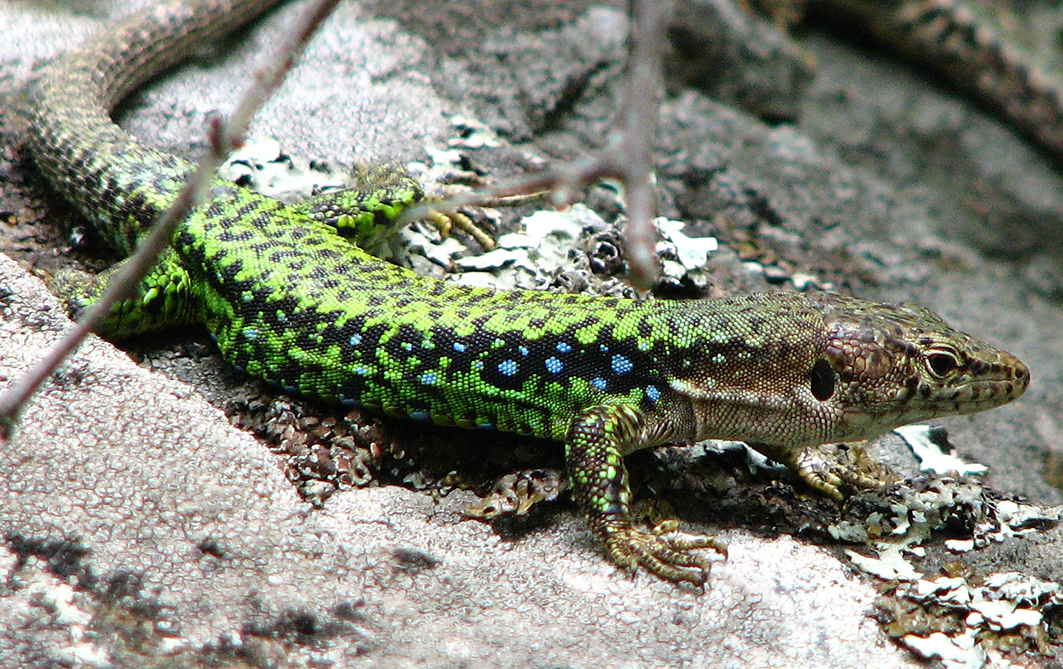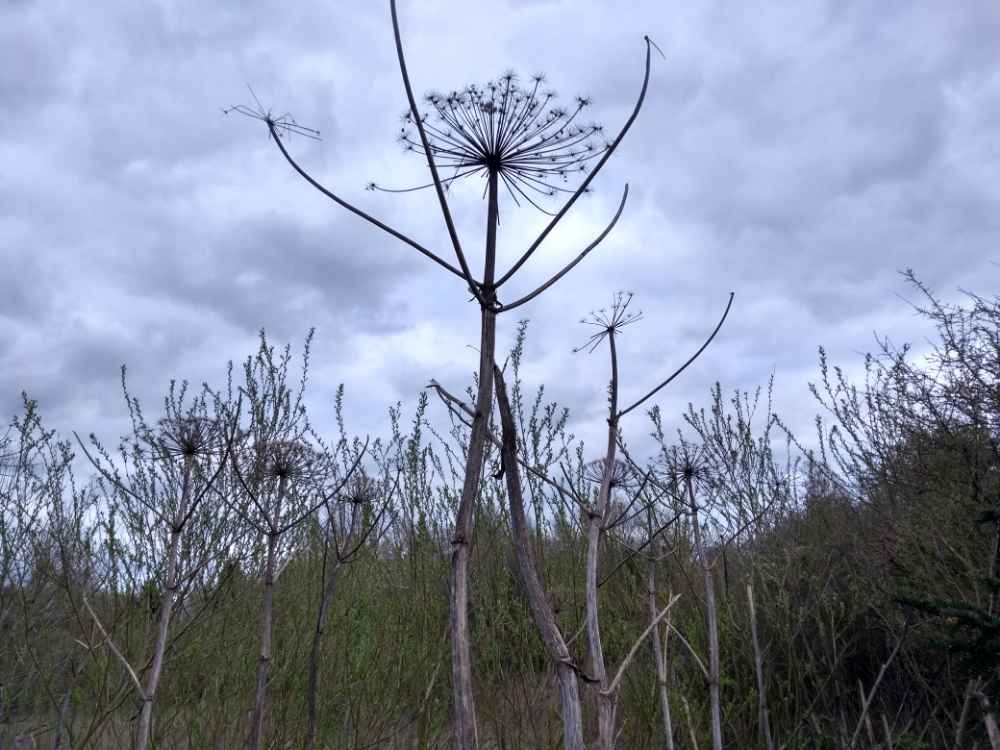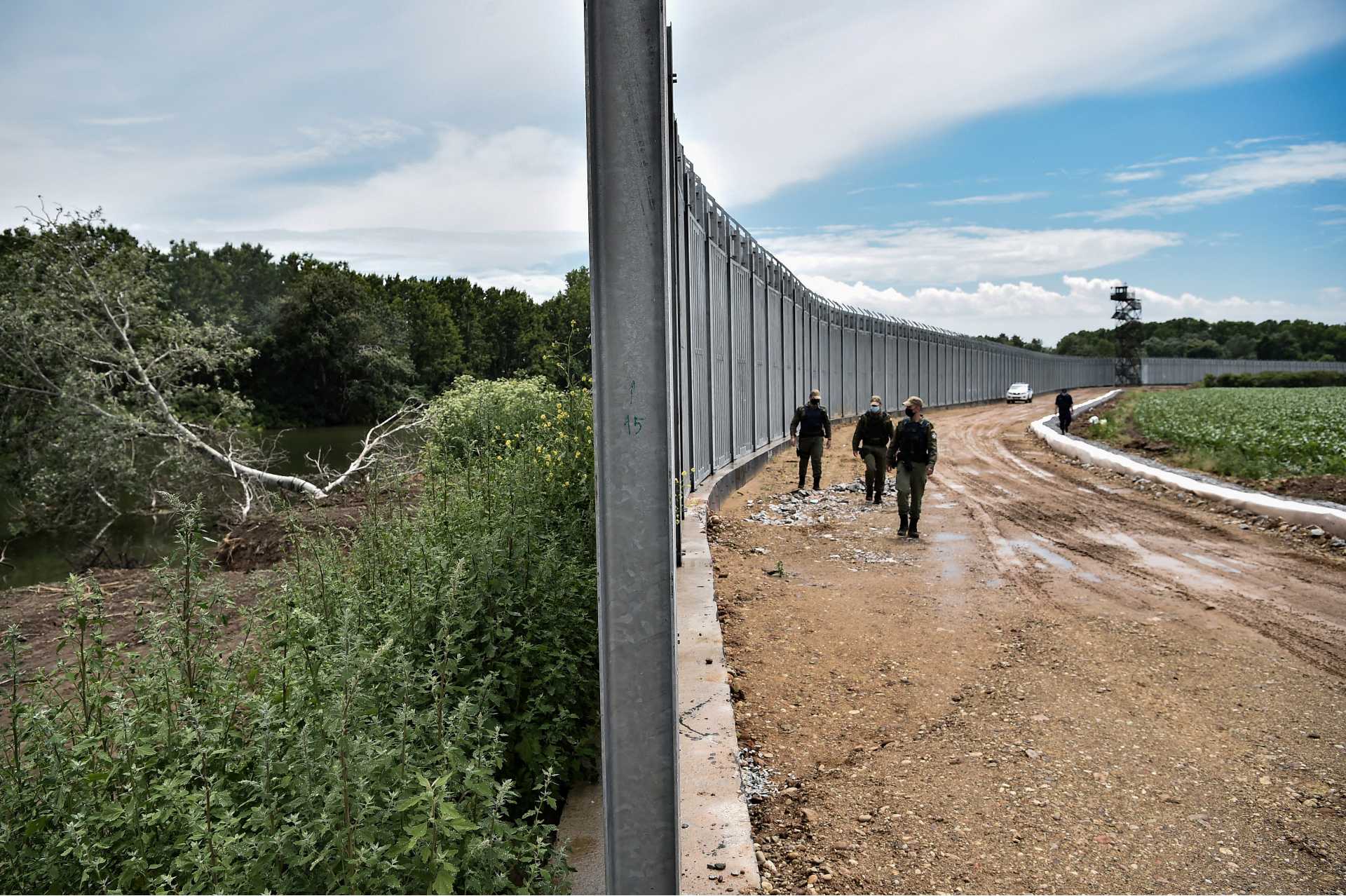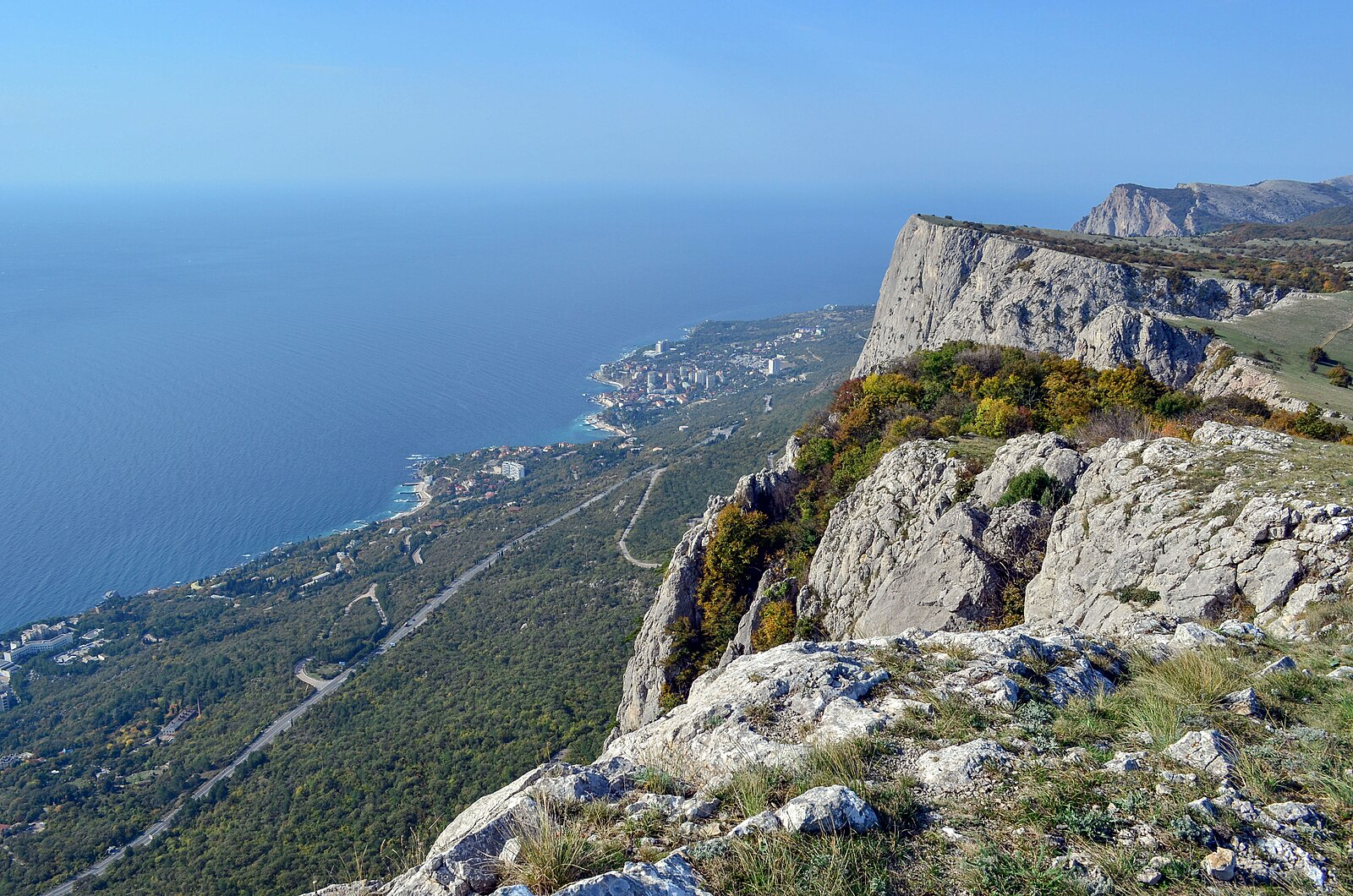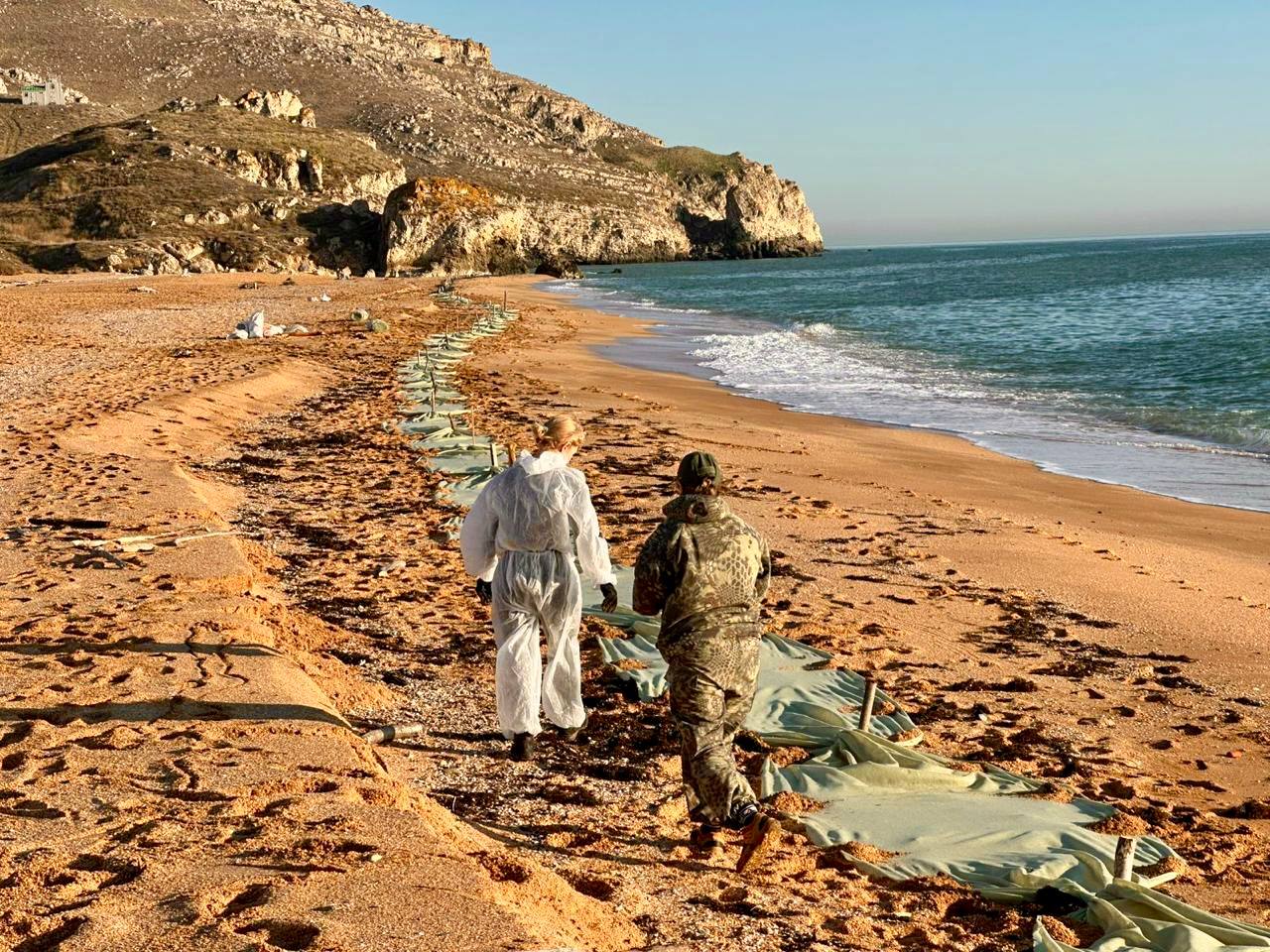Oleksii Marushchak
Wars and military conflicts at all levels of intensity are unfortunately not listed as global threats to biodiversity. Undoubtedly the most awful of humanity’s inventions, war affects most of the components of biodiversity, be it localized damage or widespread catastrophic events wiping out small endemic populations and even entire species. In this article, I. I. Schmalhausen Institute of Zoology NAS of Ukraine herpetologist Oleksii Marushchak highlights the consequences of Russia’s full-scale invasion of Ukraine for the country’s amphibians and reptiles.
The full-scale invasion by Russian armed forces in Ukraine started on 24 February 2022. In reality, however, the war actually began in 2014 with Russia’s annexation of the Crimean Peninsula and occupation of the Donbas region. Areas and habitats under Russian occupation since 2014 include the only known Ukrainian locations of Mediterranean herpetofauna, such as the European ratsnake (Zamenis situla Linnaeus, 1758), Lindholm`s rock lizard (Darevskia lindholmi Lantz et Cyren, 1936), and Pallas’s glass lizard ‘zheltopuzik’ (Pseudopus apodus Pallas, 1775), as well as a considerable share of high density populations of Steppe viper (Vipera renardi Christoph, 1861), Steppe ratsnake (Elaphe dione Pallas, 1773), and the Caspian whipsnake (Dolichophis caspius (Gmelin, 1789). Enormous territories of Europe’s most endangered biome—steppe grasslands—located within Ukraine’s protected areas system are also occupied. According to Ukrainian Nature Conservation Group, 44% of national parks and nature and biosphere reserves have been or are currently located in the war zone, under the temporary control of Russian invaders, or are inaccessible to Ukraine.
In the article “Herpetofauna at the frontline: so many ways to die…” published in March 2024 the “Responsible Herpetoculture Journal”, the authors present initial evidence of how the war in Ukraine has affected herpetofauna. Their findings were derived from data collected by the authors (scientists, environmental activists, land managers) during fieldwork and frontline interviews.
The article is not a final, ground-breaking result of a complicated study or an innovative product, but it is the first in Ukraine to assemble and present known and confirmed data relating to the negative effects of current military operations on a group of animals. Of course, quantitative assessments of biodiversity losses are still a long way off, possible only when access to the affected areas is safe and unhindered for scientists and when Ukraine’s territorial integrity is fully restored. While amphibians and reptiles are far from the only organisms suffering the war’s consequences, these animals often serve as model groups for assessing environmental impacts, as they are among the first species to respond to environmental changes.
In addition, the authors have, for the first time, collected and listed the range of impacts on these animals, information that is useful when developing future conservation management practices in post-war countries, military training grounds, and other similar locations. It is especially important to consider these impacts for the future development of compensatory and preventive measures for the protection and reproduction of wild populations of amphibians and reptiles living in and out of combat zones.
Lastly, a clear understanding of causal relationships is an important aspect of this study. The authors note that, “Although some of the examples below may apply to both sides of a military conflict, the authors emphasize that such things would never have happened in Ukraine if Russia had not launched a full-scale war against an independent sovereign country in the heart of Europe in the 21st century, and it is Russia that bears the responsibility for the destruction of wildlife while waging this aggressive war”.
Following are some of the leading harmful impacts of military actions that result in the death of Ukrainian herpetofauna in locations and ways that should not be possible.
Critical habitat transformation and destruction
Often reliant on the characteristics of specific habitats and with distinct nutrition and environmental needs, amphibians and reptiles face significant survival challenges amidst the turmoil of war. The destruction or pollution of their essential habitats, such as spawning ponds, thermoregulatory basking places, nesting areas (especially for turtles and snakes), and hiding places is immensely stressful and causes populations to decline. Animals unable to satisfy their natural needs spend more energy and resources on forced migration in search of more suitable ones. Such activity is quite costly in energy efficiency terms and directly increases the probability of being killed by a predator, dehydration, or other harms, increasing species mortality.
In some cases, an entire habitat may be destroyed, and animals must flee in search of another suitable habitat and mortality can reach 100%. For example, when the spawning areas used each breeding season by amphibians returning instinctually to the place of their metamorphosis are destroyed, everything is even worse. Such places are very often polluted by chemicals found in fuel and lubricants that enter the environment from damaged or destroyed military machinery, various chemical compounds (e.g. paints, lubricants, explosives, and their derivatives) used by armed forces, or chemicals that drain into reservoirs from bombed industrial sites and civil infrastructure facilities. For example, a single T-80 tank holds 1,110—2,210 liters of fuel; it is easy to anticipate its consequences for a small water body adjacent to a destroyed piece of machinery. If any amount of this fuel reaches a small lake or channel, it will render the area completely unsuitable for amphibian spawning for several years.
Spontaneous disturbances
When the animals are disturbed during key moments in their behavior, seasonal rhythms, and conditions, it may result in their death. For example, when wintering sites are destroyed and animals in torpor at a stable temperature emerge in wintertime at much lower temperatures, they die of thermal shock. For herpetofauna, winter disturbances may also result in lower fertility in the next breeding season, as sperm and eggs require periods at cooler temperatures for proper development. When that period is too short or does not occur at all, affected animals can’t participate fully in the production of the next generation. The situation is similar for frogs during mating: disturbances caused by bombs, vibrations, and sounds related to shelling make it a struggle to find a mate.
Shelling and munitions explosions
One of the most apparent and indisputable factors negatively impacting amphibian and reptile populations in conflict zones is their direct physical destruction. Relatively immobile vertebrates, amphibians and reptiles perish in significant numbers in the large-scale fires that frequently occur in war zones. The rapid occurrence of new fires, such as intense shelling with incendiary munitions, multiple launch rocket systems, and heavy flame-throwing systems like the TOS-1A “Solntsepyok,” often stops animals from taking refuge in burrows. These fires can engulf vast areas within just seconds, inflicting lethal wounds and causing mass fatalities among reptiles and amphibians.

Road kills
Amphibian and reptile mortality on highways also contributes to declining abundance, altering the spatial distribution of populations, hindering their ability to disperse; this is a pressing issue even in times of peace. Military operations, often characterized by the continuous movement of military convoys and heavy equipment on both highways and dirt roads, exacerbate this problem. This increased traffic load can lead to substantial declines and even extinction of specific populations, a particular issue for rare species. This problem becomes more acute with the movement of vast numbers of military vehicles on roadways or even in areas never before exposed to machinery, moving across steppe grasslands and other affected areas in Ukraine.
Intentional killings by soldiers
Low ecological awareness among soldiers contributes significantly to amphibian and reptile mortality. It is widely recognized that a substantial portion of troops are drafted personnel lacking military training, let alone any minimal inclusion of ecological education in their training curriculum. Consequently, common stereotypes of amphibians and reptiles persist unchecked. Despite reality suggesting otherwise, the prevailing belief among many soldiers is that snakes are inherently dangerous and venomous. Given the constant dangers soldiers face in military environments, eliminating any perceived threat, no matter how misguided, seems logical. As a result, encounters with snakes often result in their killing by soldiers.
Sometimes soldiers come across snakes during spring mating season or hibernation. At these times, snakes can gather in large groups: many males trying to mate with a single female or animals of different sexes forming clusters in wintering places. The photograph below shows a such a tangle of snakes, and such sights can prompt horror and disgust in most in the military and, unfortunately, also often result in a violent reaction.

Unintentional killing by soldiers
Trenches and dugouts designed according to military engineering standards, offer limited escape routes for herpetofauna that may occasionally be trapped inside. Consequently, such animals perish either during active combat or during periods of intense human movement. Few seem to be concerned about the creatures under their boots. Soldiers interviewed by the authors often noted that numerous snakes, turtles, lizards, and toads appeared in their trenches every night and that only particular people spot them and know how to behave and where to release the captives.

Invasive predators and abandoned domestic animals
War, unfortunately, leads to the absolutely uncontrolled spread of invasive species of animals that move freely on their own or with the help of military equipment. This is especially noticeable near abandoned human settlements. Thus, the spread of invasive predatory fish species (Chinese sleeper (Perccottus glenii), Pumpkinseed (Lepomis gibbosus), etc.) reduce herpetofauna reproductive success during spawning, when these invasive species eat amphibian eggs and juveniles (Pupina et al., 2018; Pupins et al., 2023). The release of captive animals from
private terrariums into nature may also pose a threat in the form of zoonotic infectious agents and temporary competition with local species for resources, even if most of the “aliens” will not survive the upcoming winter. The single most negative impact is the appearance of a large number of stray dogs and cats, which, even in peacetime, are one of the biggest (especially cats) destroyers of native herpetofauna. These impacts increase when feral domestic animals no longer have the support of humans and are forced to forage for sustenance.
Large-scale disasters
The wartime destruction of Kakhovka Hydropower Plant (HPP) dam and the subsequent surge of water into the Black Sea caused a major environmental disaster in 2023. This release of freshwater into the sea disrupted its salinity, leading to significant harm to marine life. The floodwaters also affected herpetofauna species such as European pond turtles and various amphibians and reptiles, many of which struggled to survive in these catastrophically but temporarily altered conditions. Unique populations of Danube newt (Triturus dobrogicus Kiritzescu, 1903) suffered the most after the dam was destroyed. Unfortunately, this unique population, resident in the protective environment of the Dnipro River’s floodplains, mostly perished in the rapid floodwaters, alongside many other animals borne out to the Black Sea. Their corpses washed up on Odesa region beaches and were recorded for the next two weeks, stretching from the city itself almost to the Romanian border.
Looking ahead
Unfortunately, these types of impacts are the largest and most catastrophic. The fact is that, even after active hostilities come to an end, pollution, lack of infrastructure, the unprecedented density of minefields, and other post-war horrors mean that almost 30% of Ukraine’s agricultural land will not be suitable for use. This in turn will require that Ukraine identify land and resources that could be used to compensate for these losses in the form of building materials and other demand for natural resource use. And in the conditions of post-war economic reconstruction, the demand for such valuable resources will be much higher than before the war. This will make nature conservation even more difficult.
There will be powerful and entirely understandable incentives for Ukraine’s government to prioritize using its natural resources to rebuild after surviving the largest military conflict since World War II. Nevertheless, the interests of living nature must also be considered and defended at the same time. For example, some are promoting the creation of protected areas with limited human access (like the Chornobyl Exclusion Zone) in affected areas in order to compensate for the losses of wild nature in areas used in future for agricultural purposes. This could be a potential mechanism for nature restoration. But just one, when many more are needed… Nevertheless, preventing environmental destruction in areas that, fortunately, were not affected by direct military actions, remains a key strategy.
It is worth noting that, were Ukraine not to win and fall under occupation, Russia in its aggressor role will not even consider the concept of identifying conservation priorities. Nature protection and all natural assets accumulated in decades past will be lost, and the country will be used by the aggressor as a raw resource appendage for its cannibalistic empire.
Supporting Ukraine in its fight against the aggressor, including through the lens of wildlife conservation (and not only for amphibians and reptiles), is critical. Such support facilitates a reduction in potential losses for nature in the future and can preserve past environmental achievements, something for which our descendents in future generations may thank us.
Oleskiy Marushchak is a PhD junior researcher at I. I. Schmalhausen Institute of Zoology NAS of Ukraine, Deputy Director for Science at BION Terrarium Center and Co-Founder of Ukrainian Nature Conservation Group. He has studied herpetofauna biology, distribution, and conservation in situ and ex situ since 2017.
Main image: Lindholm`s rock lizard from occupied Crimea Source: Ukrainian Biodiversity Information Network

